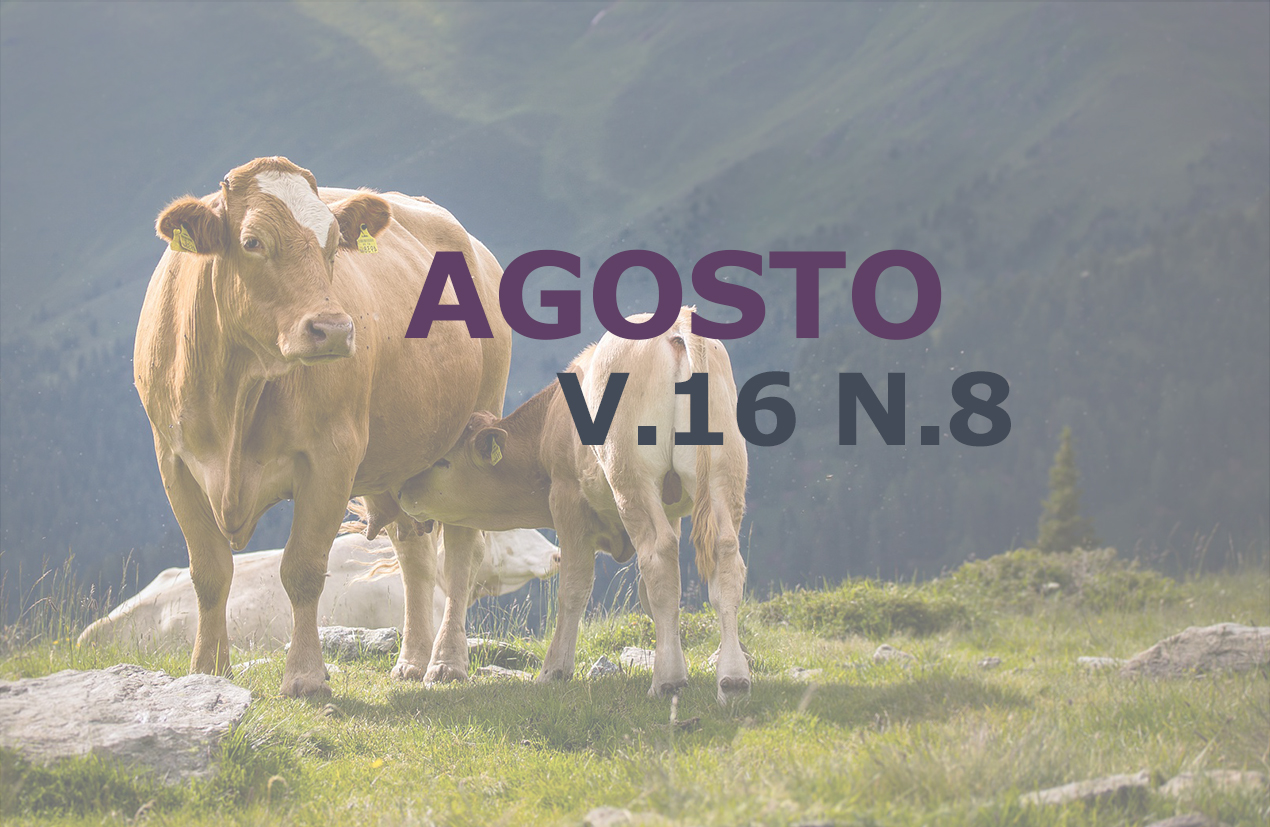Evaluation of phosphates granulometry utilized in diets to free-range chicken lines
DOI:
https://doi.org/10.31533/pubvet.v16n08a1177.1-10Keywords:
Dicalcium phosphate, monodicalcium phosphate, segregation, selectivity, particle sizeAbstract
It was used 200 broilers of the free-range chicken strain, distributed in a completely randomized design, in a 2x2 factorial scheme, two phosphates (dicalcium phosphate and monodicalcium phosphate) and two granulometries (Powder and Microgranulated), with five replications, with ten individuals per experimental unit. The animals received the following treatments: PDP: basal diet with dicalcium phosphate 18% powder; MDP: basal diet with dicalcium phosphate 18% microgranules; PPM: basal diet with phosphate monodicalcium 20% powder; and MMP: basal diet with 20% monodicalcium phosphate microgranules. It was evaluated the performance parameters of the individuals in the interval from 23 up to 38 days of age. It was collected daily, in order to evaluate the chemical composition and the granulometry of the leftovers of the rations in the feeder plates, being that these samples were organized in three (3) intervals: from day 23 up to 28; from day 29 up to 33; and from day 34 up to 38 days of age. It was not interaction between the sources and the granulometries of phosphates in all parameters of performance. There was interaction between sources and granulometry of the phosphates in the parameters of crude protein (CP), in the interval from 23 up to 28 days of age, in which the concentration of CP was higher in the feeder of the treatments containing MMP and higher values of phosphorus (P), calcium (Ca), iron (Fe) and medium particles in the ration of the feeder containing phosphate microgranules (FM). In the periods from 29 to 38 days of age, lower values of CP and higher values of P and Ca were observed in the rations of feeders containing FM, as well as higher values of Fe in the period from 34 to 38 days. In this last period, there was also an increase in the fineness modulus, an increase in the mean geometric diameter and higher values of medium particles for MDP, but for fine particles the highest values were for PDP. It was concluded that the sources and granulometry of the phosphates of the feed did not affect the performance of free-range chicken lines. However, the use of granular phosphates can promote the segregation of particles within the feeders.
Downloads
Published
Issue
Section
License
Copyright (c) 2022 Celso Roberto Silva Júnior, Alexandre Oliveira Teixeira, Leonardo Marmo Moreira, Viviane Assunção de Resende, Renata de Souza Reis, Dante Teixeira Valente Júnior, Juliana Pereira Lyon, Carlos Magno da Rocha Junior, Carla Regina Guimarães Brighenti

This work is licensed under a Creative Commons Attribution 4.0 International License.
Você tem o direito de:
Compartilhar — copiar e redistribuir o material em qualquer suporte ou formato
Adaptar — remixar, transformar, e criar a partir do material para qualquer fim, mesmo que comercial.
O licenciante não pode revogar estes direitos desde que você respeite os termos da licença. De acordo com os termos seguintes:
Atribuição
— Você deve dar o crédito apropriado, prover um link para a licença e indicar se mudanças foram feitas. Você deve fazê-lo em qualquer circunstância razoável, mas de nenhuma maneira que sugira que o licenciante apoia você ou o seu uso. Sem restrições adicionais
— Você não pode aplicar termos jurídicos ou medidas de caráter tecnológico que restrinjam legalmente outros de fazerem algo que a licença permita.





